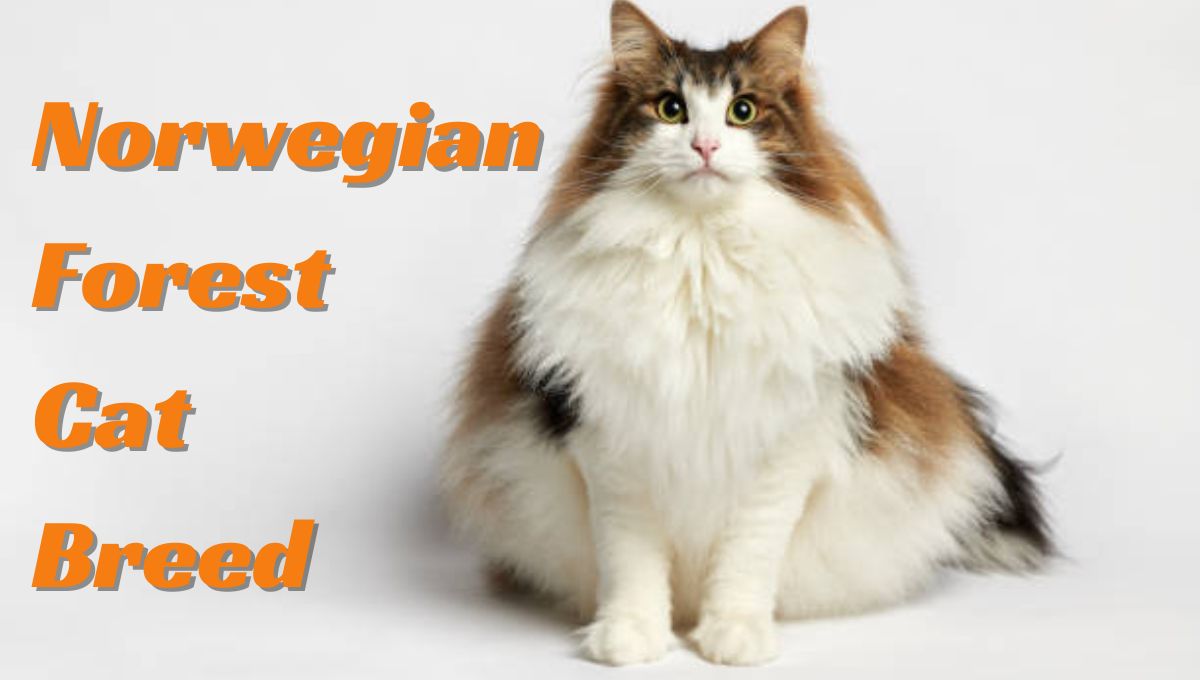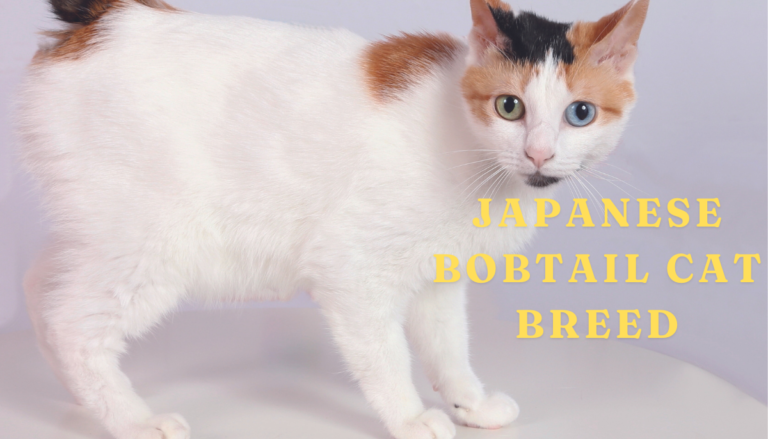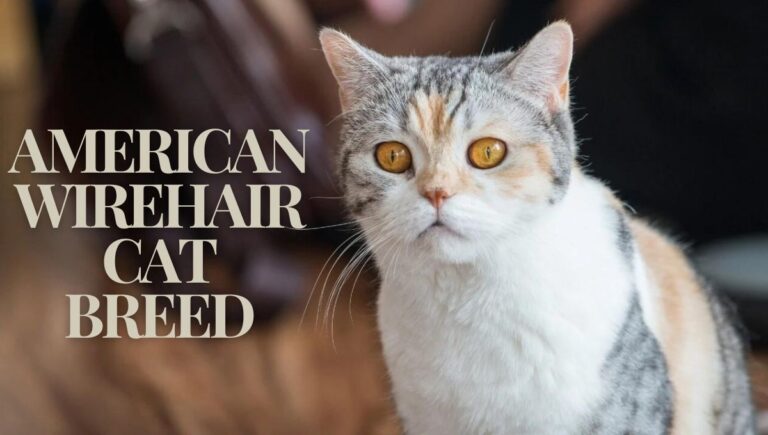Norwegian Forest Cat Breed :
Introducing the Majestic, Wild, and Enchanting Norwegian Forest Cat.
Welcome to our exploration of the enigmatic Norwegian Forest Cat! Originating from the rugged landscapes of Norway, this majestic feline possesses a captivating blend of wild beauty and gentle charm. Known locally as “skogkatt” these cats have a rich history intertwined with Norse mythology and Viking lore.
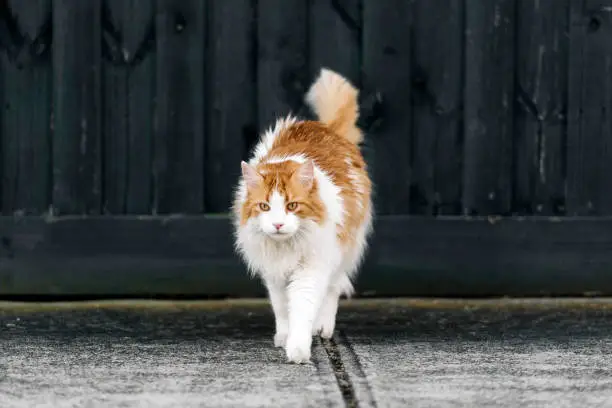
With their sturdy build, long, luxurious fur, and distinctive tufted ears, Norwegian Forest Cats exude an aura of regal elegance. Beneath their majestic appearance lies a friendly and affectionate nature, endearing them to cat lovers around the world.
In this blog, we’ll delve into the fascinating world of the Norwegian Forest Cat, uncovering its unique characteristics, temperament, and care needs. From their origins as skilled hunters and cherished shipboard companions to their role as beloved family pets today, we’ll explore every facet of this extraordinary breed.
Table of Contents
I. Origin and History of Norwegian Forest Cat Breed :
The Norwegian Forest Cat, known as “skogkatt” in its native Norway, boasts a rich history steeped in myth and legend. Its origins are believed to trace back to the Viking era, where these majestic cats were revered as skilled hunters and esteemed companions on Norse ships.
- Ancient Roots: The Norwegian Forest Cat’s lineage dates back to Norse mythology, where it was revered as the companion of Freyja, the goddess of love and fertility.
- Viking Era: During the Viking era, these cats were prized for their hunting prowess and served as valued shipboard companions, helping control rodent populations on Norse vessels.
- Natural Habitat: Evolving in the harsh Nordic climate, Norwegian Forest Cats developed thick, water-repellent coats and sturdy physiques to survive the cold winters and navigate the dense forests of Norway.
- Farmstead Guardians: In Norwegian households and farms, these cats were indispensable for keeping grain stores free of rodents, earning their keep as skilled mousers and protectors of agricultural produce.
- 20th Century Challenges: Despite their historical significance, Norwegian Forest Cats faced a decline in numbers during the 20th century due to interbreeding with domestic cats and changing agricultural practices.
- Preservation Efforts: Concerned individuals and cat enthusiasts worked diligently to preserve the breed, leading to its recognition by cat fancier organizations in the mid-20th century.
- Modern Recognition: Today, the Norwegian Forest Cat is recognized worldwide for its striking appearance, friendly disposition, and fascinating heritage, captivating cat lovers with its unique blend of wild beauty and gentle charm.
II. Physical Characteristics of Norwegian Forest Cats :
| Height | Norwegian Forest Cats are typically medium to large-sized cats, standing around 9-12 inches (23-30 cm) at the shoulder. |
| Weight | Males generally weigh between 12-16 pounds (5.4-7.3 kg), while females are slightly smaller, ranging from 9-12 pounds (4.1-5.4 kg). |
| Life Span | Norwegian Forest Cats have a relatively long lifespan, averaging between 12-16 years, although some individuals can live even longer with proper care. |
| Good With | They are generally good with children, other pets, and even dogs, especially if introduced to them at a young age and socialized properly. |
| Temperament | Norwegian Forest Cats are known for their friendly, gentle, and sociable nature. They are affectionate with their families but may be somewhat reserved with strangers. |
| Intelligence | These cats are highly intelligent and curious, often displaying problem-solving abilities and enjoying interactive play. |
| Shedding amount | Norwegian Forest Cats shed moderately throughout the year, with heavier shedding occurring during seasonal changes. Regular grooming can help manage their shedding. |
| Grooming | Due to their long, dense coat, Norwegian Forest Cats require regular grooming to prevent matting and tangles. Brushing a few times a week is recommended to keep their coat in good condition. |
| Exercise needs | They have moderate exercise needs and enjoy activities like climbing, exploring, and interactive play sessions. Providing them with scratching posts and cat trees can help satisfy their natural instincts. |
| Energy level | Norwegian Forest Cats have a moderate to high energy level, particularly when they are young. They enjoy playtime and may engage in bursts of activity throughout the day. |
| Meowing level | Tend to be more reserved in their vocalizations compared to some other breeds. |
| Drool amount | Norwegian Forest Cats are not known for excessive drooling, and drooling is not a common trait in this breed. |
| Coat length/Texture | They have a semi-longhaired coat with a dense, water-resistant outer layer and a soft, insulating undercoat. Their coat is longer and thicker around the neck, chest, and tail. |
| Colors | Norwegian Forest Cats come in various colors, including white, black, blue, cream, red, and various shades of tabby. |
| Patterns | They can have various coat patterns, including solid, tabby, tortoiseshell, and bicolor, among others. The most common pattern is the classic tabby pattern with distinctive swirls or stripes. |
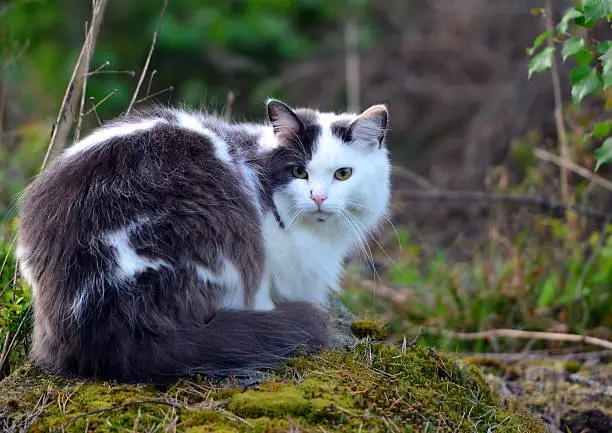
- Body: They have a sturdy and well-proportioned body, with a broad chest and strong legs. Despite their size, they are agile and graceful movers.
- Coat: The Norwegian Forest Cat is known for its distinctive double-layered coat, consisting of a dense, water-resistant outer coat and a soft, insulating undercoat. The coat is longer and thicker around the neck (“ruff”), chest, and tail, giving them a majestic appearance.
- Tail: One of their most striking features is their bushy, long tail, often as long as their body or even longer. The tail is thick and heavily furred, tapering to a point.
- Head: They have a triangular-shaped head with a straight profile and high cheekbones. Their ears are medium to large in size, tufted at the tips, and set high on the head.
- Eyes: Norwegian Forest Cats have large, almond-shaped eyes that can come in various colors, including green, gold, or copper. Their expressive eyes often have a sweet and intelligent gaze.
- Facial Features: They possess a distinctive, slightly rounded muzzle with a gentle slope, giving them a sweet and friendly expression. Their lynx-like ear tufts and whisker pads add to their captivating appearance.
- Overall Appearance: Norwegian Forest Cats exude an air of wild beauty and elegance, with their luxurious coat, tufted ears, and bushy tail. They have a gentle and friendly demeanor that complements their majestic physical characteristics.
III. Temperament and Personality of Norwegian Forest Cat Breed :
General Demeanor:
- Friendly and gentle disposition.
- Affectionate towards their family members.
- Often independent but enjoy human company.
- Curious and intelligent, displaying problem-solving abilities.
Friendliness and Sociability:
- Form strong bonds with their human companions.
- Typically good with children and other pets when properly socialized.
- Enjoy interactive play and affectionate gestures from their owners.
- Can be reserved with strangers but generally warm up quickly.
Common Behavioral Traits – Positive:
- Playful and energetic, enjoying interactive toys and games.
- Excellent hunters, displaying natural stalking and pouncing behaviors.
- Adaptable to various living environments, including indoor and outdoor spaces.
- May enjoy climbing and exploring high perches due to their agile nature.
Common Behavioral Traits – Challenging:
- Moderate to high energy level may require sufficient mental and physical stimulation.
- Can be territorial, especially towards unfamiliar animals entering their space.
- May exhibit hunting behaviors indoors, potentially leading to mischief or damage.
- Some individuals may be sensitive to changes in their environment or routines.
Managing and Addressing Breed-Specific Behavior Issues:
- Provide plenty of interactive toys and opportunities for play to satisfy their natural instincts.
- Establish a consistent routine for feeding, grooming, and playtime to help reduce stress.
- Offer scratching posts and other appropriate outlets for their need to scratch and climb.
- Ensure they have access to safe outdoor spaces or provide indoor enrichment to prevent boredom.
- Positive reinforcement training can help address any unwanted behaviors, such as excessive scratching or aggression towards other pets.
Norwegian Forest Cats are beloved for their friendly and sociable nature, coupled with their intelligence and playful demeanor. By understanding their breed-specific traits and providing appropriate care and enrichment, owners can help ensure a harmonious relationship with these majestic and loving companions.
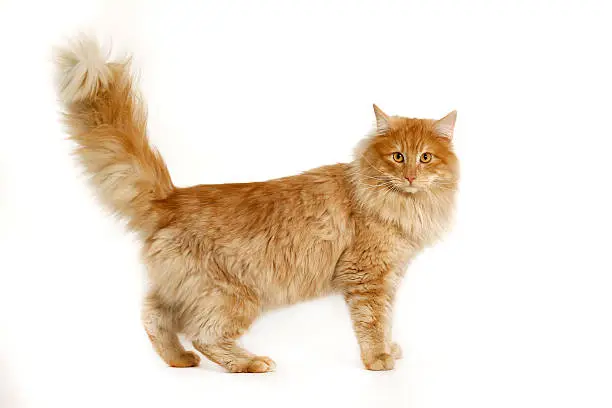
IV. Care and Maintenance of Norwegian Forest Cat Breed :
Grooming Needs :
The Norwegian Forest Cat is a majestic breed known for its thick, water-repellent double coat, bushy tail, and tufted ears. This coat is adapted for harsh climates, which means it requires specific grooming to keep it in good condition. Here are the key grooming needs for a Norwegian Forest Cat:
Regular Brushing
- Frequency: Brush your Norwegian Forest Cat at least 2-3 times a week. During shedding seasons (spring and fall), daily brushing is recommended to manage the increased shedding.
- Tools: Use a slicker brush, a wide-toothed comb, and a deshedding tool. The slicker brush helps remove loose hair and prevent mats, while the comb can reach deeper into the undercoat.
- Technique: Be gentle to avoid damaging their skin. Pay special attention to areas where mats are more likely to form, such as behind the ears, under the armpits, and on the belly.
Bathing
- Frequency: Bathing should be infrequent, about once every few months or as needed. Their coat is water-repellent, which makes bathing less essential but also more challenging.
- Products: Use a cat-specific shampoo that is gentle and free of harsh chemicals. Avoid using human shampoo as it can be too drying for their skin.
- Technique: Make sure to thoroughly wet the coat and rinse out all the shampoo to prevent residue that can cause skin irritation.
Nail Trimming
- Frequency: Trim the cat’s nails every 2-3 weeks. Regular trimming helps prevent overgrowth and splitting.
- Tools: Use cat nail clippers or a grinder.
- Technique: Be cautious not to cut into the quick (the pink part of the nail), which can cause pain and bleeding.
Ear Cleaning
- Frequency: Check their ears weekly and clean as needed.
- Tools: Use a cotton ball or soft cloth dampened with a vet-recommended ear cleaner.
- Technique: Gently wipe the outer part of the ear, avoiding inserting anything into the ear canal.
Dental Care
- Frequency: Brush their teeth daily if possible, or at least a few times a week.
- Tools: Use a cat-specific toothbrush and toothpaste.
- Technique: Start slowly to get them accustomed to the process. Dental treats and regular vet check-ups can also help maintain oral health.
Eye Care
- Frequency: Check their eyes regularly and clean if needed.
- Tools: Use a damp, soft cloth.
- Technique: Gently wipe away any discharge or tear stains.
Health Check
- Frequency: Regular vet visits are essential for overall health. Annual or bi-annual check-ups can help detect any issues early.
- Observation: Keep an eye on any changes in behavior, eating habits, or physical appearance that could indicate health problems.
By maintaining a consistent grooming routine, you can help keep your Norwegian Forest Cat’s coat healthy and reduce the risk of mats and other grooming-related issues. This breed’s independent and playful nature can make grooming a bonding experience if approached with patience and care.
Health Consideration :
The Norwegian Forest Cat is generally a robust and healthy breed, thanks to its natural evolution in the harsh climates of Scandinavia. However, like all breeds, it has some specific health considerations that potential owners should be aware of:
Hypertrophic Cardiomyopathy (HCM)
- Description: HCM is a common heart disease in cats where the heart muscle thickens, which can lead to heart failure.
- Symptoms: Symptoms may include lethargy, rapid breathing, and sudden collapse.
- Management: Regular veterinary check-ups, echocardiograms, and genetic testing can help detect and manage this condition early.
Glycogen Storage Disease Type IV
- Description: This is a rare genetic disorder that affects the metabolism of glucose. It’s more common in Norwegian Forest Cats than in other breeds.
- Symptoms: Symptoms typically appear in kittens and include muscle weakness, growth retardation, and neurological issues. In severe cases, it can be fatal.
- Management: There is currently no cure, so managing symptoms and providing supportive care is essential. Genetic testing can help identify carriers and prevent breeding affected kittens.
Hip Dysplasia
- Description: Hip dysplasia is an abnormal development of the hip joint that can lead to arthritis and pain.
- Symptoms: Symptoms include limping, difficulty jumping, and decreased activity.
- Management: Weight management, physical therapy, and in severe cases, surgery, can help manage this condition. Regular veterinary check-ups are crucial for early detection.
Polycystic Kidney Disease (PKD)
- Description: PKD is a genetic disorder that causes cysts to form in the kidneys, leading to kidney dysfunction over time.
- Symptoms: Symptoms may include excessive drinking and urination, weight loss, and poor coat condition.
- Management: There is no cure, but dietary management, regular monitoring, and supportive treatments can help manage symptoms. Genetic testing can identify carriers.
Periodontal Disease
- Description: Periodontal disease is a common issue in many cats, including Norwegian Forest Cats, and involves inflammation and infection of the gums and supporting structures of the teeth.
- Symptoms: Symptoms include bad breath, red or swollen gums, and difficulty eating.
- Management: Regular dental care, including brushing teeth and professional cleanings, can help prevent periodontal disease.
Obesity
- Description: Norwegian Forest Cats can be prone to obesity due to their large size and laid-back nature.
- Symptoms: Symptoms include excessive weight gain, difficulty moving, and lethargy.
- Management: A balanced diet and regular exercise are crucial. Monitor their weight and adjust their diet as needed to prevent obesity-related health issues.
General Health Tips:
- Regular Veterinary Check-ups: Annual or bi-annual veterinary visits are essential for early detection of health issues.
- Vaccinations: Ensure your cat is up-to-date with vaccinations to prevent common infectious diseases.
- Parasite Control: Regular flea, tick, and worm prevention treatments are important.
- Spaying/Neutering: This can prevent certain health issues and behavioral problems.
By being aware of these health considerations and taking proactive measures, you can help ensure that your Norwegian Forest Cat remains healthy and happy throughout their life. Regular veterinary care, a balanced diet, and a loving home environment are key to their well-being.
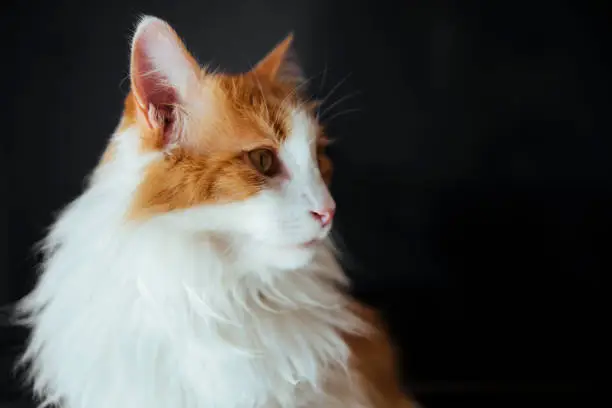
Nutrition :
Proper nutrition is essential for the health and well-being of Norwegian Forest Cats, as it is for all cat breeds. Here are some key considerations for their diet:
High-Quality Cat Food
- Choose a high-quality cat food that is specifically formulated for the nutritional needs of adult cats. Look for options that are labeled as complete and balanced by organizations like the Association of American Feed Control Officials (AAFCO).
- Opt for cat food that contains real meat as the primary ingredient, such as chicken, turkey, or fish. Cats are obligate carnivores, so animal-based protein is crucial for their diet.
Protein Content
- Norwegian Forest Cats require a diet rich in protein to support their muscular build and active lifestyle. Look for cat food with a protein content of around 30-40% on a dry matter basis.
Moderate Fat Content
- Fat provides energy and helps maintain healthy skin and coat. Look for cat food with a moderate fat content, typically around 15-20% on a dry matter basis.
Limited Carbohydrates
- Cats have a limited ability to digest carbohydrates, so it’s best to choose cat food with a low to moderate carbohydrate content. Look for options that are grain-free or have whole grains like rice or oats listed lower on the ingredients list.
Essential Nutrients
- Ensure that the cat food provides essential nutrients such as vitamins, minerals, and taurine. Taurine is especially important for cats’ heart and eye health.
- Look for cat food that is fortified with omega-3 and omega-6 fatty acids for healthy skin and coat.
Hydration
- Norwegian Forest Cats, like all cats, need access to fresh water at all times. Wet cat food can also contribute to their overall water intake and help prevent urinary tract issues.
Portion Control
- Monitor your cat’s portion sizes and avoid overfeeding, which can lead to obesity and related health problems. Follow feeding guidelines provided by the cat food manufacturer and adjust portions based on your cat’s age, weight, and activity level.
Special Dietary Considerations
- Some Norwegian Forest Cats may have specific dietary needs or sensitivities. If your cat has any health issues or food allergies, consult with your veterinarian to determine the best diet plan.
Avoid Feeding Human Foods
- Avoid feeding your Norwegian Forest Cat table scraps or human foods, as these can be harmful to their health. Certain foods, such as chocolate, onions, and garlic, are toxic to cats and should be avoided entirely.
Regular Veterinary Check-ups
- Schedule regular veterinary check-ups to monitor your cat’s overall health and discuss any dietary concerns with your veterinarian.
By providing a balanced and nutritious diet, you can help ensure that your Norwegian Forest Cat maintains optimal health and vitality throughout their life.
Exercise :
Norwegian Forest Cats are known for their athleticism, agility, and love for the great outdoors. To keep them healthy and happy, providing adequate exercise and mental stimulation is essential. Here are some ways to ensure your Norwegian Forest Cat gets the exercise they need:
Interactive Play
- Engage your Norwegian Forest Cat in interactive play sessions using toys such as feather wands, laser pointers, or interactive puzzle toys. These activities mimic hunting behaviors and provide mental stimulation.
Climbing and Perching
- Norwegian Forest Cats love to climb and explore their environment. Provide cat trees, shelves, or perches where they can climb, jump, and survey their surroundings.
Outdoor Enclosures
- If it’s safe and feasible in your area, consider building or purchasing an outdoor enclosure or “catio” where your Norwegian Forest Cat can safely enjoy the sights, sounds, and smells of the outdoors.
Supervised Outdoor Time
- Take your Norwegian Forest Cat for supervised outdoor walks on a harness and leash. This allows them to explore new environments while remaining safe from potential dangers such as traffic or predators.
Fetch
- Some Norwegian Forest Cats enjoy playing fetch with their favorite toys. Encourage this behavior by tossing toys for them to retrieve.
Puzzle Toys and Treat Dispensers
- Use puzzle toys and treat dispensers to provide mental stimulation and encourage your cat to “hunt” for their food or treats.
Hide and Seek
- Hide treats or toys around the house for your Norwegian Forest Cat to find. This engages their natural hunting instincts and provides both physical and mental exercise.
Rotating Toys
- Rotate your cat’s toys regularly to keep them engaged and prevent boredom. Introducing new toys or rotating the existing ones can help maintain their interest.
Playtime with Other Pets
- If you have other pets, encourage playtime and interaction between them. Just ensure that interactions are supervised and positive for all animals involved.
Scheduled Play Sessions
- Set aside dedicated time each day for play and exercise with your Norwegian Forest Cat. Consistency is key to maintaining their physical and mental well-being.
Obstacle Courses
- Create obstacle courses using household items or agility equipment designed for cats. This can include tunnels, ramps, and hurdles to provide physical challenges and mental stimulation.
Positive Reinforcement
- Use positive reinforcement, such as treats and praise, to encourage and reward your Norwegian Forest Cat’s active behaviors and participation in exercise activities.
By incorporating a variety of exercise and play options into your Norwegian Forest Cat’s daily routine, you can help keep them physically fit, mentally stimulated, and fulfilled. Just remember to tailor activities to your cat’s individual preferences and abilities, and always prioritize their safety and well-being.
V. Suitability of Norwegian Forest Cat Breed :
Suitability for Families and Other Pets for the Norwegian Forest Cat Breed:
Families:
- Norwegian Forest Cats are generally well-suited for families, as they are affectionate, gentle, and sociable.
- They form strong bonds with their human companions and often enjoy interacting with children.
- Supervision is recommended, especially with younger children, to ensure gentle handling and respect for the cat’s boundaries.
Other Pets:
- Norwegian Forest Cats can get along well with other pets when properly introduced and socialized.
- They may coexist peacefully with dogs, cats, and other small animals, especially if introduced at a young age.
- Slow introductions and positive reinforcement can help foster harmony between the Norwegian Forest Cat and other household pets.
Socialization:
- Early socialization is key to helping Norwegian Forest Cats adapt to different people, pets, and environments.
- Expose them to a variety of experiences, including interactions with other animals and outings to different places, to help them feel comfortable and confident.
Interaction and Play:
- Norwegian Forest Cats enjoy interactive play and thrive on companionship.
- Engage them in regular play sessions with interactive toys and games to provide mental stimulation and bonding opportunities.
- Supervised playtime with other pets can help strengthen their relationships and prevent potential conflicts.
Supervision and Monitoring:
- While Norwegian Forest Cats are generally friendly and tolerant, it’s essential to supervise interactions between them and other pets, especially during the initial introduction phase.
- Watch for signs of stress or discomfort and intervene if necessary to prevent any conflicts or injuries.
Communication and Understanding:
- Educate family members, especially children, about proper cat behavior and handling techniques.
- Teach them to recognize signs of stress or agitation in the cat and to respect the cat’s need for personal space.
Integration Process:
- When introducing a Norwegian Forest Cat to a new family or other pets, take it slowly and gradually.
- Provide separate spaces and resources for each pet initially and gradually increase supervised interactions over time.
- Use positive reinforcement, treats, and praise to reward calm and friendly behavior during introductions.
By considering the temperament and needs of both the Norwegian Forest Cat and other family members or pets, you can create a harmonious and enjoyable living environment for everyone involved. With patience, understanding, and proper supervision, Norwegian Forest Cats can make wonderful additions to families with children and other pets.
VI. Adoption and Breeder consideration of Norwegian Forest Cats :
When considering adopting or purchasing a Norwegian Forest Cat, it’s important to weigh several factors to ensure that this breed fits well with your lifestyle and that you obtain your cat from a responsible source. Here are some key considerations for both adoption and purchasing from a breeder:
Adoption Considerations
Rescue Organizations and Shelters:
- Look for breed-specific rescue organizations dedicated to Norwegian Forest Cats. These organizations often have cats in need of rehoming.
- Check local animal shelters and general cat rescue groups, as they occasionally have purebred cats.
Health and Vet Checks:
- Ensure the cat has been examined by a veterinarian and is up to date on vaccinations and health screenings.
- Ask about any known health issues or special care requirements.
Behavior and Socialization:
- Inquire about the cat’s temperament and socialization history. Norwegian Forest Cats are known for being friendly and affectionate, but individual personalities can vary.
- Ask if the cat has any behavioral issues or specific needs that need to be addressed.
Background Information:
- Gather as much information as possible about the cat’s background, including previous owners and reasons for rehoming.
- Understanding the cat’s history can help you provide the best possible care and environment.
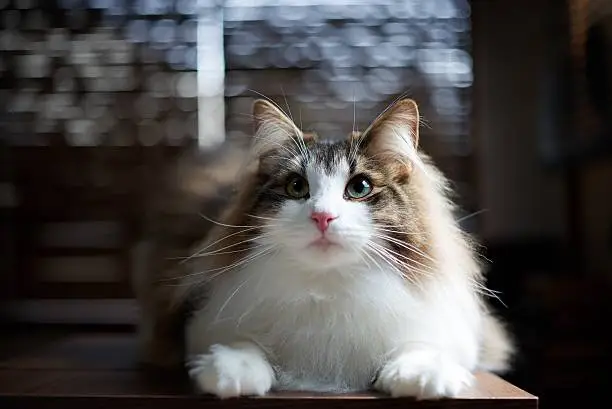
Breeder Considerations
Finding a Reputable Breeder:
- Look for breeders who are registered with recognized cat breeding associations such as The International Cat Association (TICA) or the Cat Fanciers’ Association (CFA).
- Ensure the breeder adheres to ethical breeding practices and prioritizes the health and well-being of their cats.
Health Screening:
- A responsible breeder will provide health certificates and documentation of veterinary checks, vaccinations, and genetic testing for common breed-specific health issues such as hypertrophic cardiomyopathy (HCM) and glycogen storage disease type IV (GSD IV).
Breeding Environment:
- Visit the breeder’s facility to assess the living conditions of the cats. They should be kept in a clean, safe, and nurturing environment.
- Observe the behavior of the cats; they should appear healthy, well-socialized, and comfortable around humans.
Pedigree and Registration:
- Request to see the pedigree of the kitten to ensure it is a purebred Norwegian Forest Cat.
- Confirm that the breeder provides proper registration papers for the kitten from a recognized cat registry.
Contracts and Guarantees:
- A reputable breeder will typically offer a written contract outlining the terms of sale, health guarantees, and any spay/neuter requirements.
- Discuss any guarantees regarding the kitten’s health and what recourse is available if a genetic health issue arises.
Breeder Support:
- A good breeder will offer ongoing support and advice after the purchase. They should be willing to answer questions and provide guidance on care, feeding, and health.
General Care and Considerations
Grooming:
- Norwegian Forest Cats have a thick, water-repellent double coat that requires regular grooming to prevent matting and reduce shedding.
- Plan for weekly grooming sessions and more frequent grooming during seasonal shedding periods.
Activity and Environment:
- These cats are active and enjoy climbing and exploring. Provide plenty of vertical spaces, such as cat trees and shelves, to keep them entertained.
- Ensure they have access to a stimulating environment with toys and interactive playtime.
Diet and Health:
- Provide a balanced diet suitable for their age, weight, and health needs. Consult with your veterinarian for dietary recommendations.
- Regular veterinary check-ups are crucial to monitor their health and address any issues promptly.
By considering these factors, you can make an informed decision about adopting or purchasing a Norwegian Forest Cat and ensure you are prepared to provide a loving and suitable home for this beautiful and unique breed.
VII. Conclusion :
The Norwegian Forest Cat is a striking and robust breed known for its thick, water-repellent double coat, strong build, and affectionate nature. These cats are friendly, social, and highly adaptable, making them wonderful companions. They enjoy climbing and exploring, necessitating an environment rich in vertical spaces and interactive play.
Responsible ownership of a Norwegian Forest Cat involves understanding and meeting their grooming, dietary, and environmental needs. Regular grooming is essential to manage their dense fur and reduce shedding, while a balanced diet and routine veterinary care ensure their overall health.
Whether adopting from a rescue organization or purchasing from a reputable breeder, it’s crucial to prioritize the cat’s health, well-being, and background. Ensure the source adheres to ethical practices, provides necessary health screenings, and offers ongoing support.
Before bringing a Norwegian Forest Cat into your home, consider all aspects of their care and lifestyle requirements. By doing so, you can ensure a harmonious and fulfilling relationship with this magnificent breed.
FAQ about Norwegian Forest Cats :
How can I find a reputable breeder for a Norwegian Forest Cat?
Look for breeders who are registered with recognized cat breeding associations such as The International Cat Association (TICA) or the Cat Fanciers’ Association (CFA). Ensure the breeder follows ethical practices, provides health certifications, and maintains clean and safe living conditions for their cats.
What should I feed my Norwegian Forest Cat?
A balanced diet that is appropriate for their age, weight, and health status is essential. Consult with your veterinarian to determine the best dietary plan for your cat, including high-quality cat food that meets their nutritional needs.
Are Norwegian Forest Cats good with children and other pets?
Yes, they are typically good with children and other pets due to their social and friendly nature. Proper introductions and socialization are key to ensuring harmonious relationships.
What health issues are common in Norwegian Forest Cats?
Common health issues in Norwegian Forest Cats include hypertrophic cardiomyopathy (HCM) and glycogen storage disease type IV (GSD IV). Regular veterinary check-ups and health screenings can help manage and prevent these conditions.
What kind of environment do Norwegian Forest Cats thrive in?
They thrive in environments that provide plenty of vertical spaces like cat trees and shelves for climbing. They also enjoy interactive toys and playtime to keep them mentally and physically stimulated.

